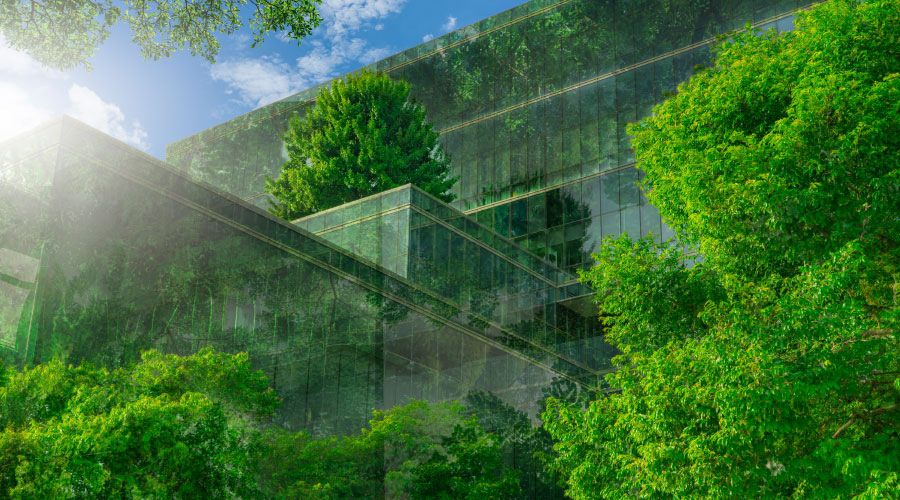USGBC Perspective: The Evolution of LEED for Existing Buildings
LEED 2012 Postponed
Due to concerns from U.S. Green Building Council members and some LEED users, LEED 2012, which had been scheduled for release in November at the annual Greenbuild conference, is being delayed until June 1, 2013. The rating system will also be renamed LEED v4. Though there have already been more than 20,000 public comments, there will be a fifth public comment period that opens Oct. 2, 2012 and runs through Dec. 10, 2012.
According to USGBC President and CEO Rick Fedrizzi, "(The delay) is 100 percent in response to our members' desire that we give them a bit more time to absorb the changes in this next version of the rating system."
Changes in each draft to the Materials & Resources section, where new approaches to material selection differed greatly from previous version of LEED, were among the main reasons cited for the postponement, according to multiple sources.
For more information, visit www.usgbc.org/leed
Calculating Carbon Footprint
The International Facility Management Association has released "Carbon Footprint," the latest in its "Sustainability 'How-To' Guide Series." The document offers facility managers a comprehensive approach to understanding greenhouse gas emission accounting, reporting and minimization. It also provides facility professionals with the tools they need to understand the carbon footprinting process, analyze their results and plan for the future of their organizations.
The document covers topics such as what a carbon footprint is, the role of the facility manager in calculating it, analyzing the results, best practices and benchmarking, setting goals for reduction, making the business case, and case studies.
Carbon Footprint and all guides in the "How-To" series can be downloaded for free at: www.ifmafoundation.org/research/how-to-guides.htm
A Green Home Run
Marlins Park in Miami, Fla., the new home of baseball's Miami Marlins, has become the first retractable roof stadium in the world to earn a LEED Gold certification. The facility, located on the site of the former Orange Bowl, achieves a 22.4 percent reduction (by cost) on energy compared to a similar retractable roof stadium.
The stadium has a comprehensive Event Recycling Plan to ensure recycling of plastics, metals, paper, cardboard and glass. Additionally, more than 75 percent of construction materials were recycled during construction.
Water efficient plumbing fixtures will reduce water use by 52 percent compared to a traditional stadium.
A regenerative drive system on the 8,000-ton steel roof reduces the power consumption during braking at times when the moving panel is being pushed by the wind. It is estimated that each opening and closing of the roof costs approximately $10 or less in electricity.
U.S. Green Building Council Perspective
Evolution for Existing Buildings
by Jennifer Easton, Communications Associate, USGBC
Picture the "greenest" building you know: That is, the most sustainable. The most energy and resource-efficient. The healthiest for the planet and for the people who inhabit said structure.
Now, fess up. Did you picture a brand new, net-zero skyscraper complete with all the bells and whistles? An eye-pleasing, newly constructed green home rooted entirely in biomimicry? These are all fantastic choices, and represent projects that are raising the bar for green building innovation in new construction projects ever higher. But a growing number of sustainability professionals believe that the greenest building is the one that's already built.
The National Trust for Historic Preservation is in agreement: The organization released a report this year concluding that it can take up to 80 years for even the most energy-efficient new building to overcome the negative climate change impacts created during the construction process. So — while it's incredibly important to apply green building principles to minimize the impact of our new construction projects — preserving, updating and rehabilitating our existing building stock is of equal, if not more, concern.
This pie slice of buildings comes with its own set of challenges, but even some of our country's most historic and iconic existing buildings have successfully completed green retrofits. The U.S. Treasury Building, constructed in 1842, represents the oldest project to earn LEED for Existing Buildings: Operations & Maintenance certification, and the landmark Empire State Building (built in 1931) also makes the list.
Currently, we're working on the next update to LEED, dubbed LEED v4. In it, we hope to remove barriers and create more inclusive opportunities for existing building projects, all the while implementing increasingly meaningful and stringent requirements to raise the bar for green building as a whole. One way we're doing this is with new options for specific space types. LEED v4 includes rating systems addressing existing schools, retail, data centers, and warehouse and distribution center projects.
After all, can you imagine a retail location — relatively small space, fluctuating number of occupants — applying the same LEED rating system as a data center — vast space, massive energy demand (can be equal to that of a small town, in some cases), one or few occupants? LEED has, in the past, been universally (and successfully) applied to space types spanning hotels, warehouses, high-rise offices buildings and of course data centers and retail stores; with LEED v4, project teams will be able to apply rating systems that are tailored more closely to their market sector.
As we continue to update LEED with the help of stakeholder public comments (around 20,000 thus far), we strive to build a rating system that pushes the green building industry forward. In providing support and rating systems specifically geared toward the challenges of the different types of existing building projects, we feel we're playing a vital role in the evolution of the existing building.
|
Related Topics:















